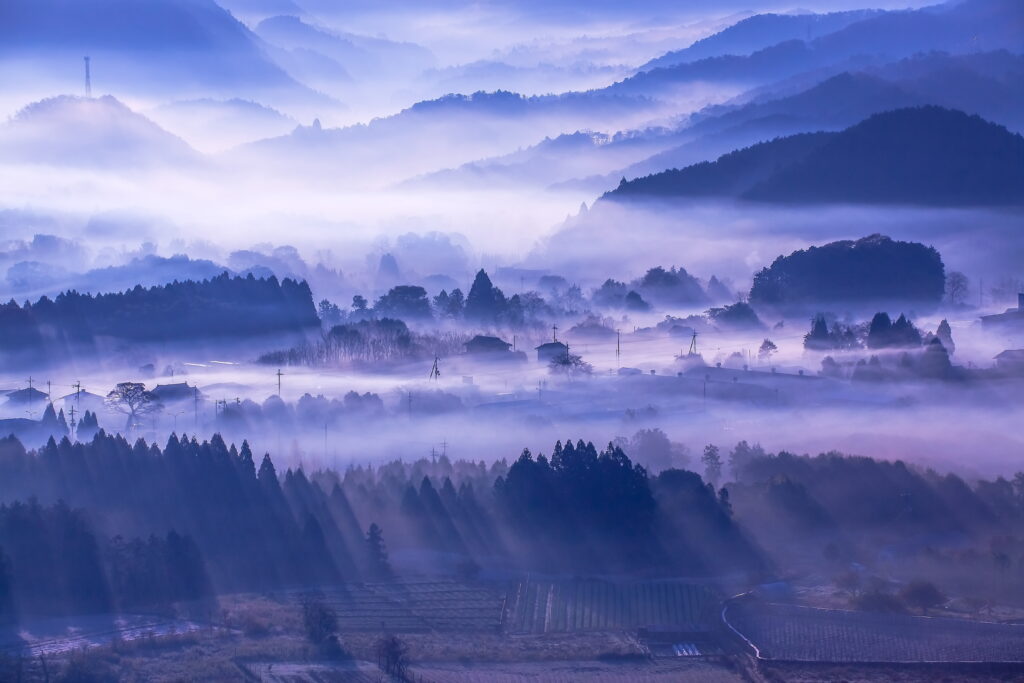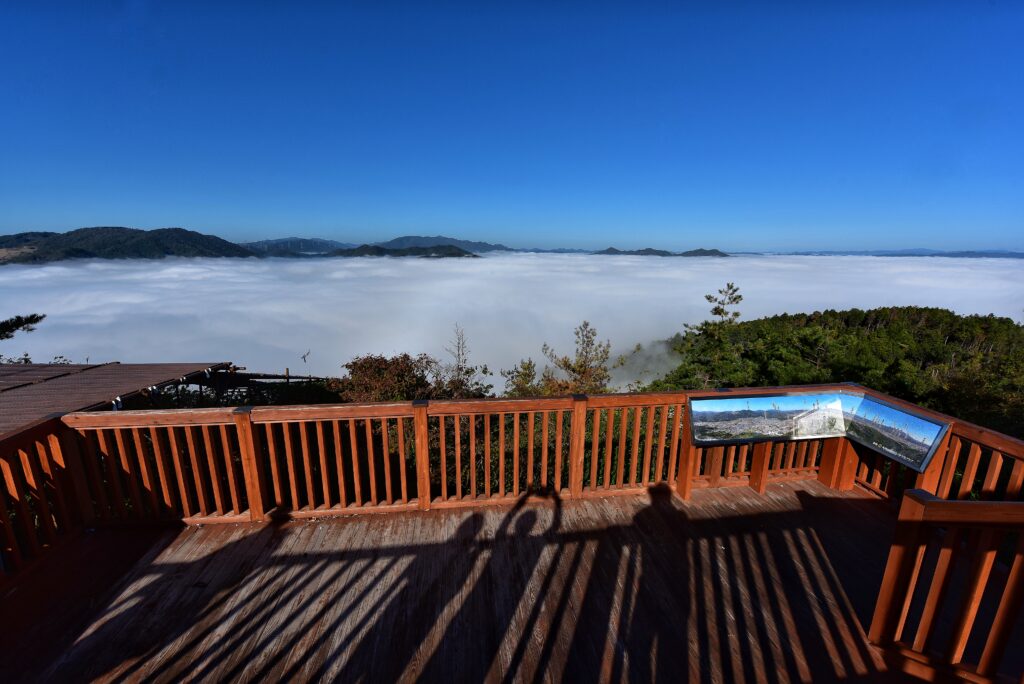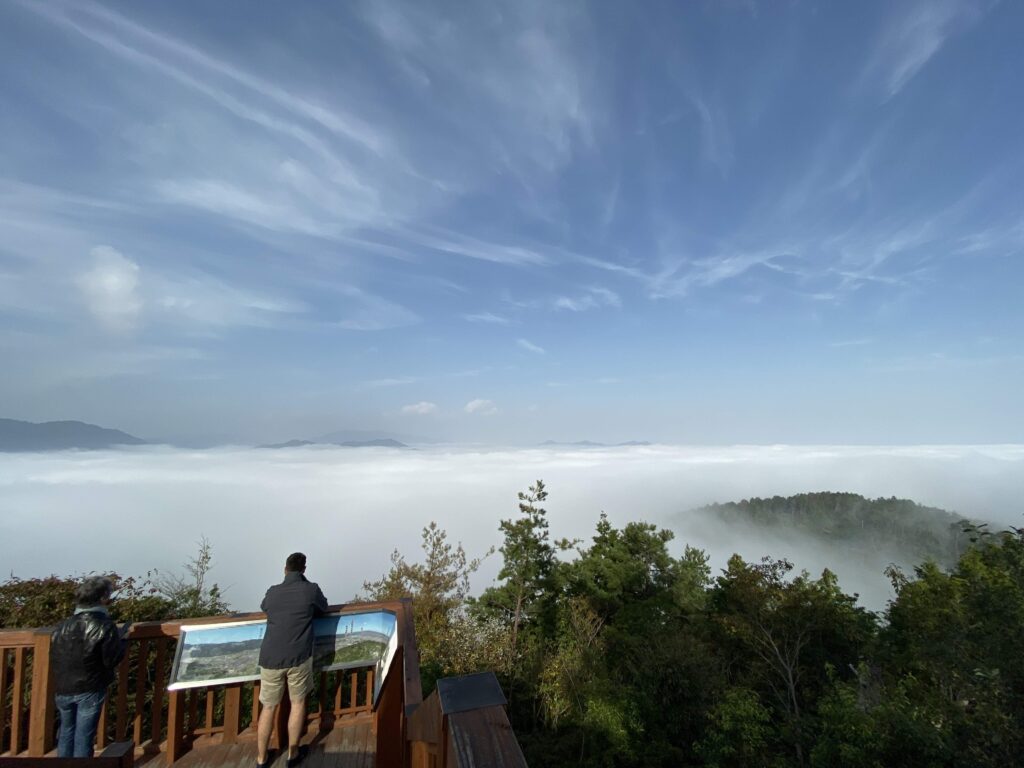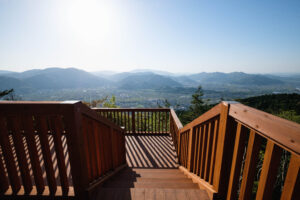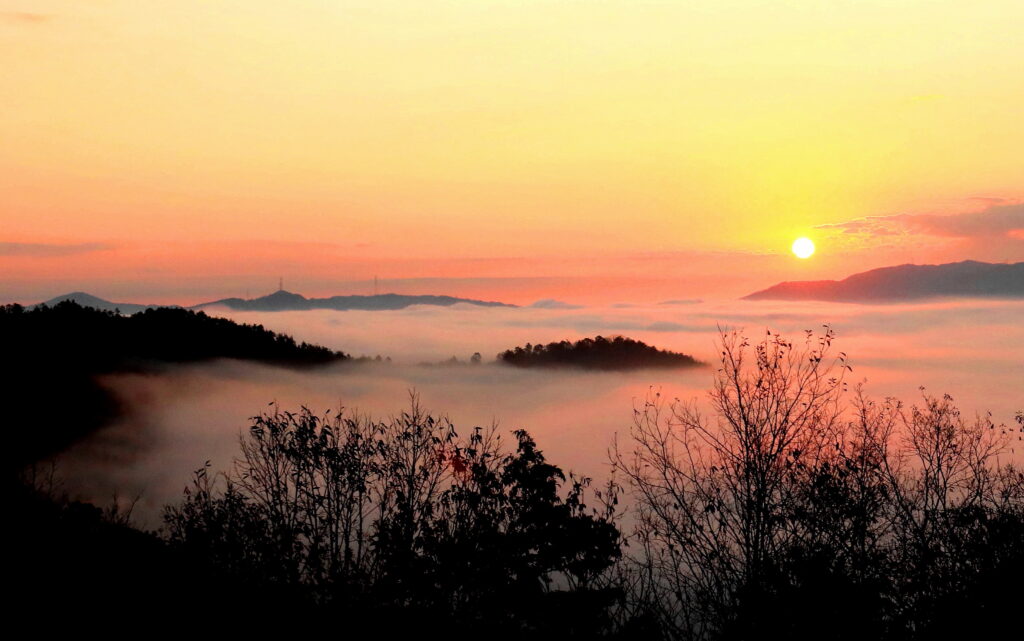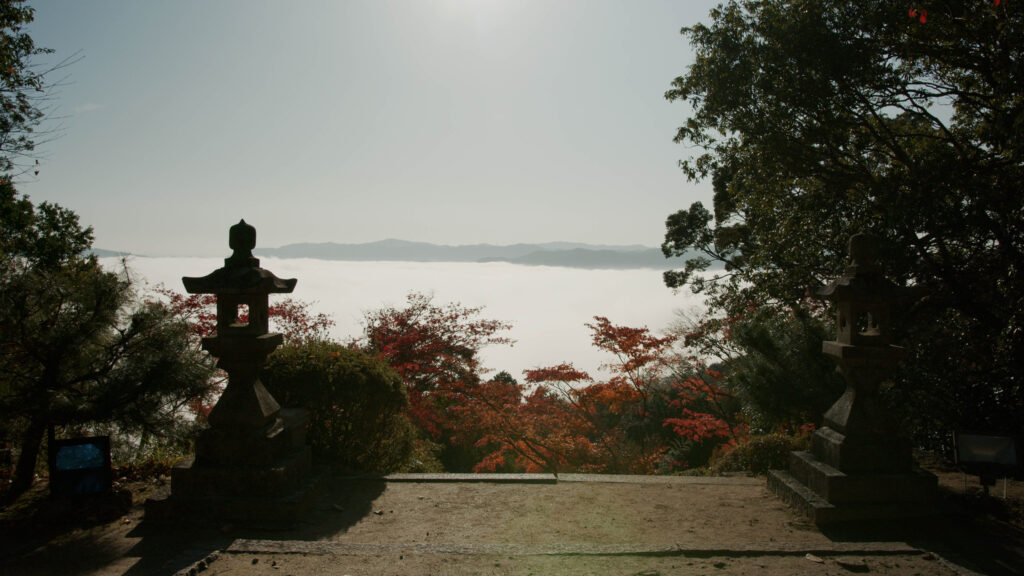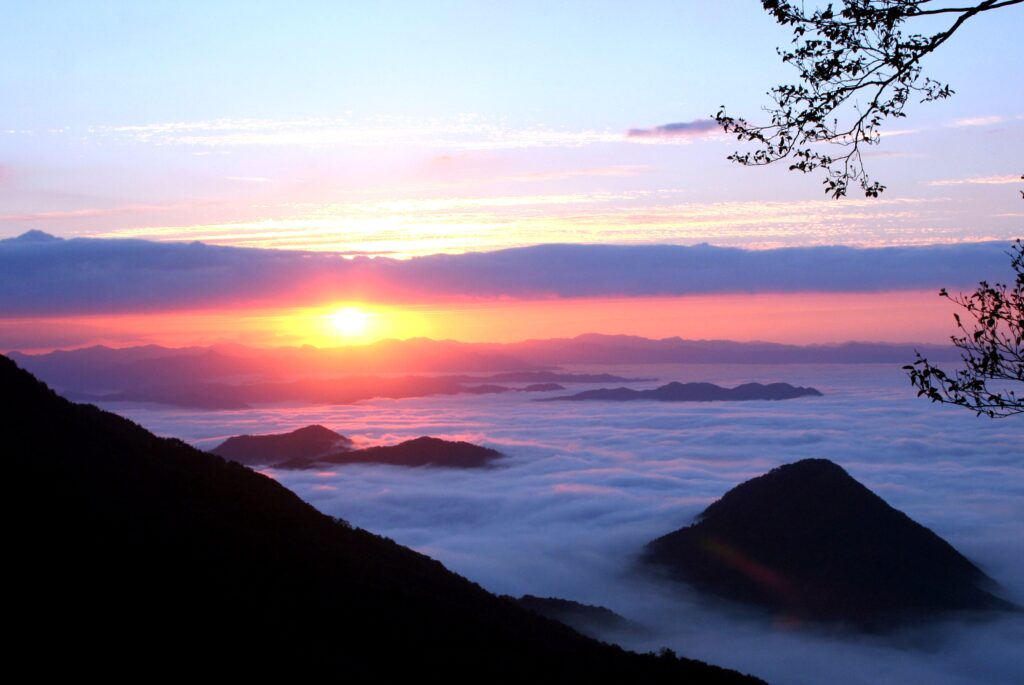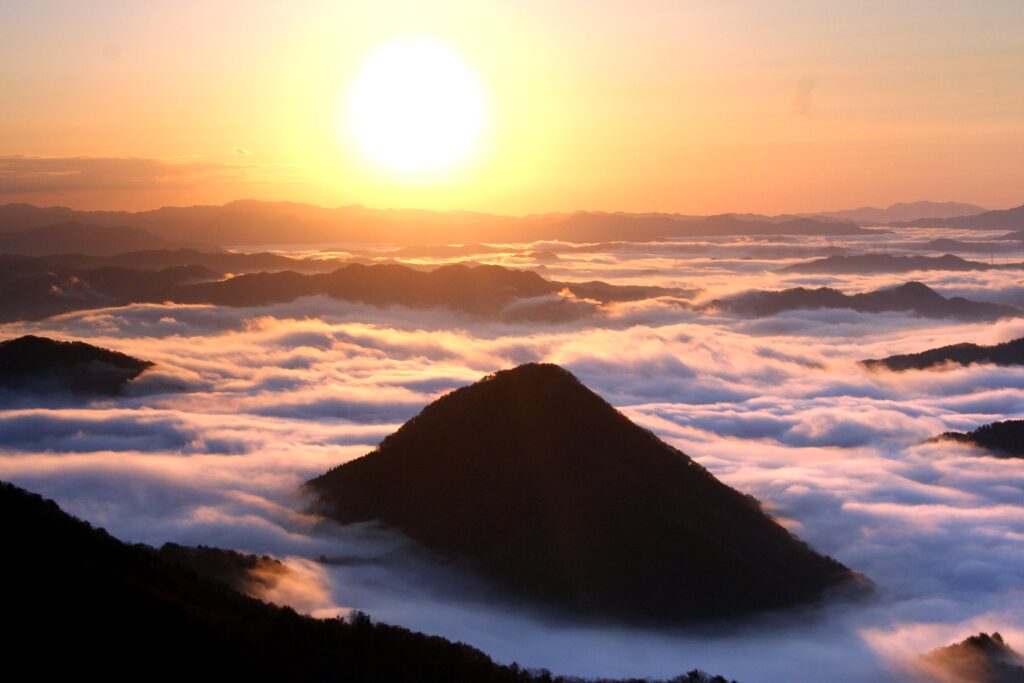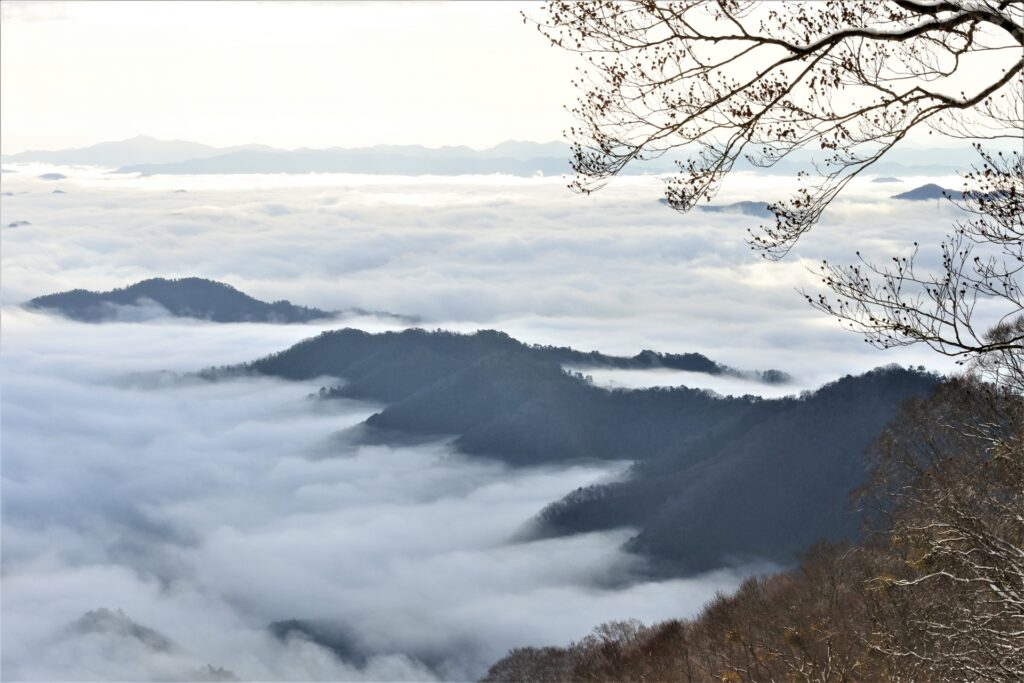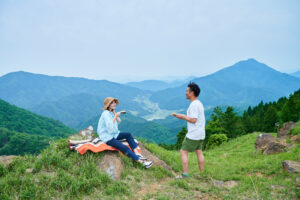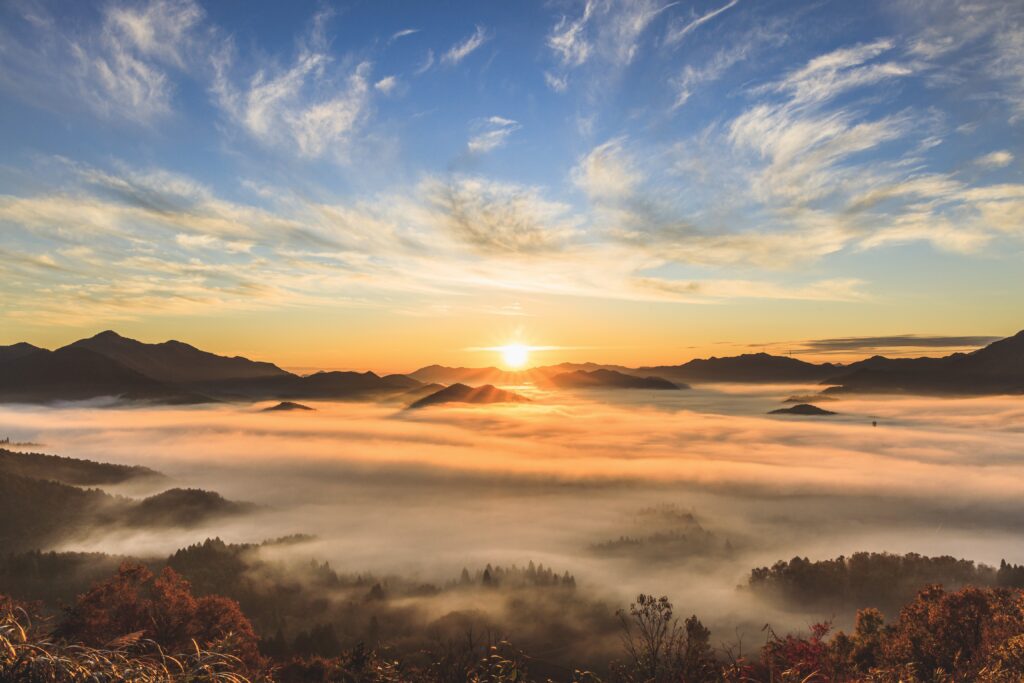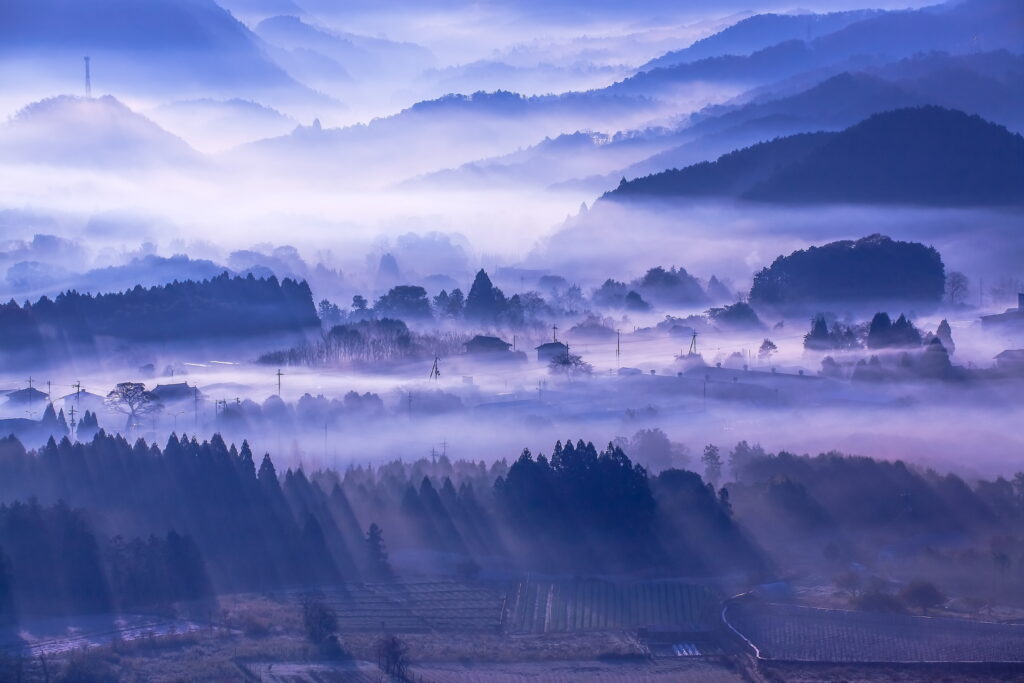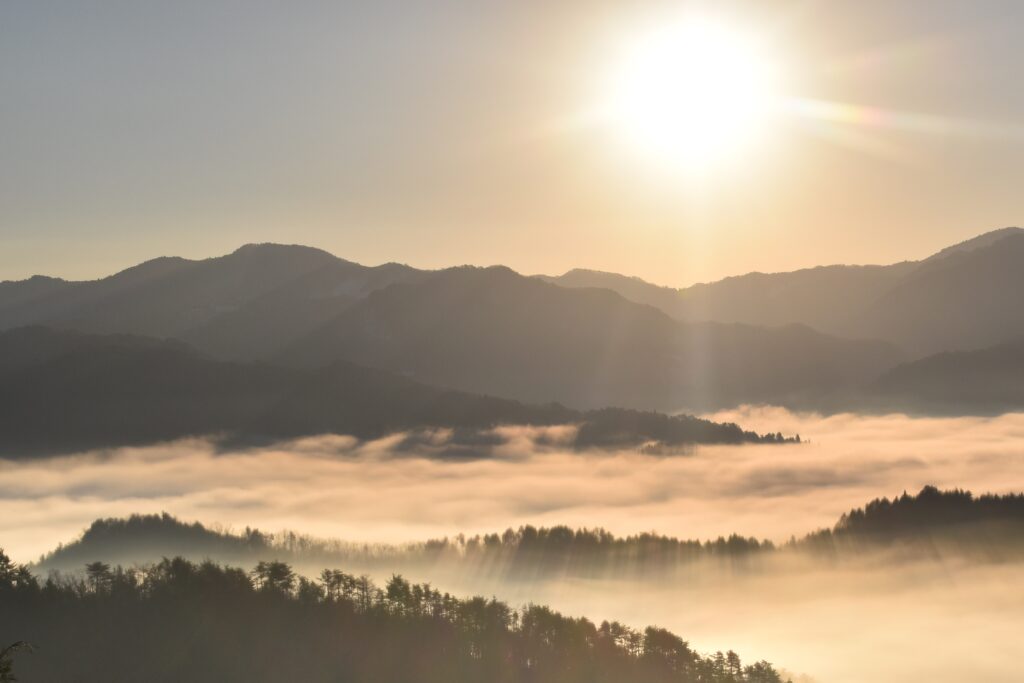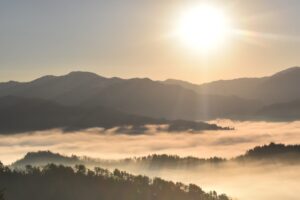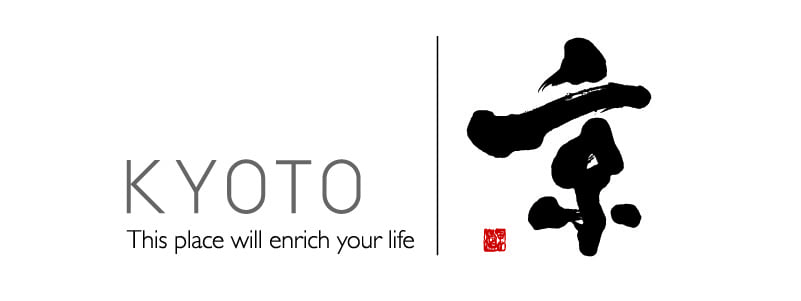Understanding Unkai: Conditions for the Sea of Clouds Phenomenon
Unkai occurs when cool, humid air is trapped in a valley or plain below drier, warmer air. In most places, this happens in the early morning, when the ground has lost most of its heat during the night and warmer air blows in at a higher altitude. In this area, unkai is most common beginning in fall. Your best chance to see it is early in the morning on a sunny day with little wind, when rain has fallen in the previous days.
